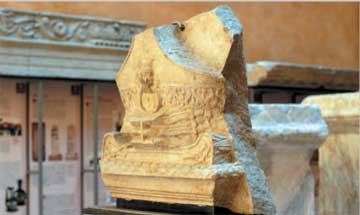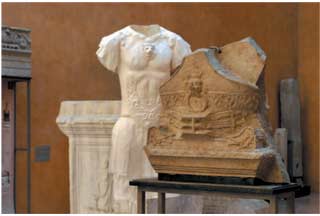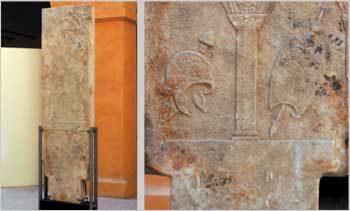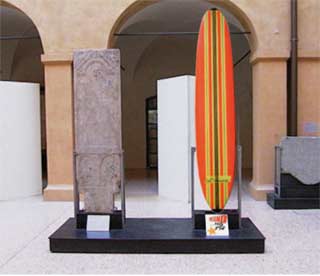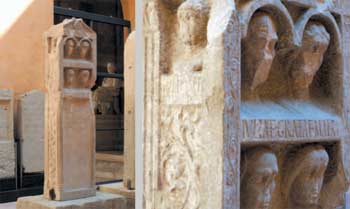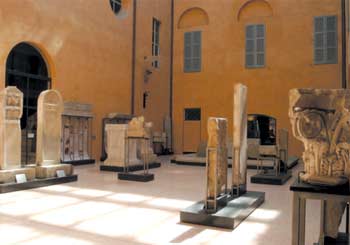
LAPIDARIO ROMANO DEI MUSEI CIVICI
PALAZZO DEI MUSEI
Viale Vittorio Veneto 5
tel. 059/200125
![]() critical text by Serena Goldoni
critical text by Serena Goldoni
The remains of the funerary monuments collected in the Roman Epigraphic Museum in Modena are the bearers of ideas and traditions of a civilization that is still deeply fascinating, and they inspired the artists who take part in Gemine Muse this year.Claudia Ascari makes the figure of the fleet commander resurface, creating around his essence a thin, ethereal robe, floating in the air. He comes back to the places where he lived walking softly, with almost unseizable, ephemeral, silent steps. He is a presence/absence, stressed by the incorporeity of the material used, subject to the wear and tear of time, just another remain, an earthly fetish abandoned after a quick passage in the world of the living.Rocco Bizzarri puts two ways of life separated by thousands of years side by side, placing a surfboard next to the funerary stelae. The surfboard is the emblem of the Californian myth, which also becomes the symbol of a precarious balance on the borderline between the abyss and the earthly world, between tangible and intangible. The sticker put on it as a finishing touch acquires an epigraphic value, marking more deeply the celebration of a custom.Elisa Turchi, with her collage made with parts of different stelae, creates a tombstone for herself, for the artists and for all those who love art. Impressed by the Roman tradition of erecting commemorative stelae for people who were still alive, in order to hand down to the posterity the memory of the dedicants and to transmit their values, she ironically builds a monument dedicated to those who are somehow close to the world of art. By simulating and inventing precise information on its finding, the artist brings her work closer to the deep meaning the original stelae had.
